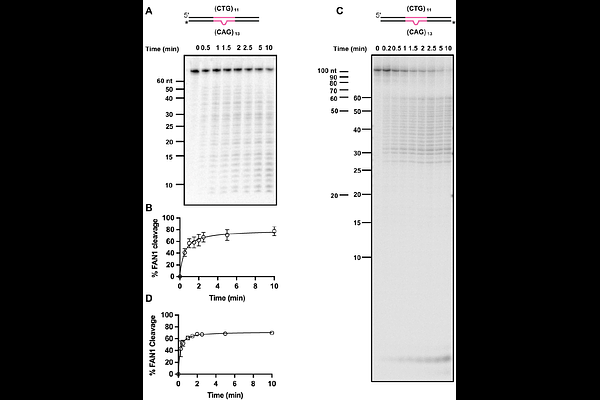DNA extrusion size determines pathway choice during CAG repeat expansion

DNA extrusion size determines pathway choice during CAG repeat expansion
Bhatia, M.; Phadte, A. S.; Lakhina, A.; Monte Carlo, A. R.; Barndt, S.; Pluciennik, A.
AbstractDNA triplet repeat expansion is the mutational cause of neurodegenerative disorders such as Huntington disease, myotonic dystrophy type 1, and fragile-X related disorders. There is a general consensus that recognition of extrahelical extrusions or hairpin-loop structures (formed by strand slippage) by the DNA mismatch repair protein MutS beta leads to repeat expansion by a mutagenic repair process. By contrast, the FAN1 nuclease prevents triplet repeat expansion, the molecular basis of which was explained by our recent finding that FAN1 nuclease cleaves and initiates removal of extrahelical extrusions. We have proposed that competition for extrusion binding between FAN1 and MutS beta governs the outcome of the opposing effects of these two pathways. Here we show that extrusions containing 2-3 triplet repeats are recognized and processed by both FAN1 and MutS beta pathways. However, a single triplet extrusion escapes FAN1 cleavage and is exclusively processed by MutS beta-dependent MMR, leading to repeat expansion. Thus, the size of the extrahelical extrusions formed by strand slippage events affects the ultimate fate of the repeat elements, and controls the bias between repeat expansion or stability. These findings provide new insights into the role of DNA structural dynamics in establishing pathway choice in DNA repair.